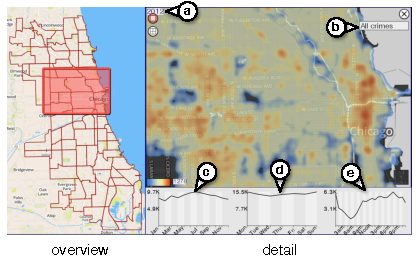Effects of Display Size and Resolution on User Behavior and Insight Acquisition in Visual Exploration
April 18th, 2015
Categories: Applications, Human Factors, User Groups, Visualization, Human Computer Interaction (HCI), Instrumentation

Authors
Reda, K., Johnson, A., Papka, M., Leigh, J.About
Large high-resolution displays are becoming increasingly common in research settings, providing data scientists with visual interfaces for the analysis of large datasets. Numerous studies have demonstrated unique perceptual and cognitive benefits afforded by these displays in visual analytics and information visualization tasks. However, the effects of these displays on knowledge discovery in exploratory visual analysis are still poorly understood. We present the results of a small-scale study to better understand how display size and resolution affect insight. Analyzing participants’ verbal statements, we find preliminary evidence that larger displays with more pixels can significantly increase the number of discoveries reported during visual exploration, while yielding broader, more integrative insights. Furthermore, we find important differences in how participants performed the same visual exploration task using displays of varying sizes. We tie these results to extant work and propose explanations by considering the cognitive and interaction costs associated with visual exploration.
Resources
URL
Citation
Reda, K., Johnson, A., Papka, M., Leigh, J., Effects of Display Size and Resolution on User Behavior and Insight Acquisition in Visual Exploration, In the Proceedings of CHI 2015, Seoul, Korea, April 18th, 2015. https://doi.org/10.1145/2702123.2702406